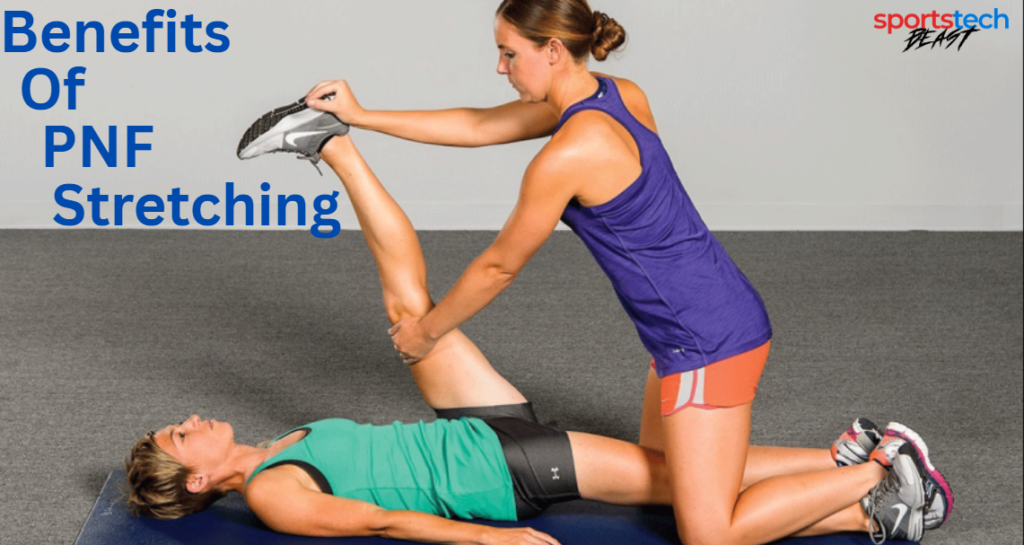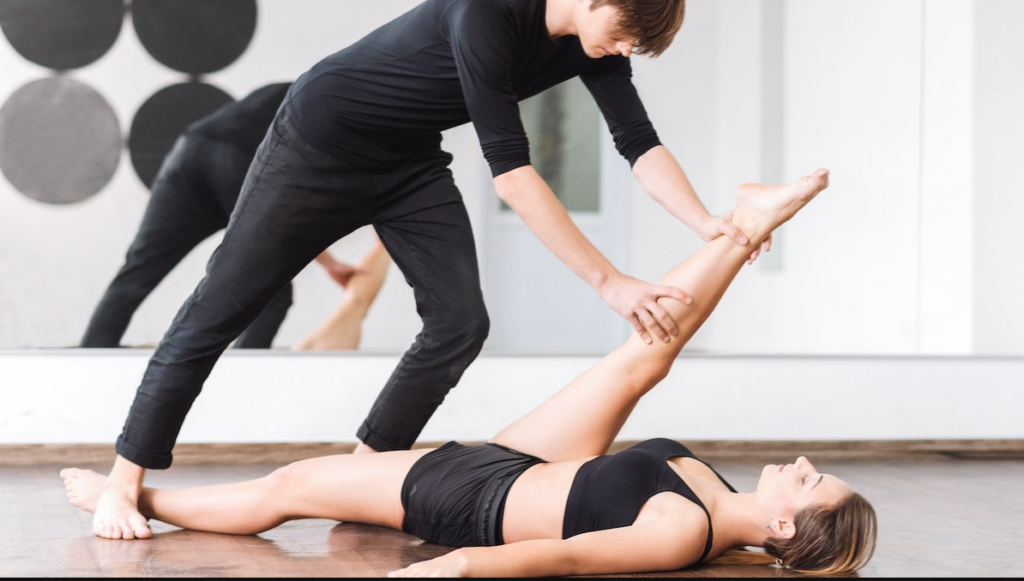Want to boost your flexibility and mobility faster? PNF stretching might be the key. Widely used by athletes, physical therapists, and strength athletes, Proprioceptive Neuromuscular Facilitation (PNF) is an advanced form of flexibility training designed to improve range of motion and muscular control efficiently.
Originally developed for rehabilitation, PNF stretching has since gained traction in sports performance and strength training due to its effectiveness.
What Is PNF Stretching?
Proprioceptive Neuromuscular Facilitation, or PNF, is a technique developed in the 1940s to treat neuromuscular conditions. Initially used in clinical rehabilitation settings, it has since evolved into a cornerstone method in athletic training, physical therapy, and performance enhancement.
PNF stretching involves stretching and contracting the targeted muscle group. Unlike traditional static stretching, which holds a position, PNF uses neurological cues to improve flexibility by alternating between contraction and relaxation. This dual-action approach leverages the body’s proprioceptive system, which is responsible for sensing muscle tension and movement, to increase the range of motion safely.

How PNF Stretching Works
The core of PNF stretching revolves around three essential phases: stretch, contract, and relax. First, the target muscle is gently lengthened to a point of mild tension. Then, the individual performs an isometric contraction against resistance for several seconds, holding tension without moving the joint. Finally, the muscle is relaxed, and the stretch gets deeper.
There are several effective variations of this method. The Hold-Relax technique involves a passive stretch followed by an isometric hold, then a deeper passive stretch.
Contract-Relax follows a similar sequence but includes a brief dynamic contraction. Hold-Relax with Antagonist Contraction incorporates activation of the opposing muscle group during the final stretch, further enhancing flexibility through reciprocal inhibition.
These variations all serve the same purpose: to reset the neuromuscular system, reduce muscle guarding, and allow for increased muscle length and mobility.
Benefits of PNF Stretching
PNF stretching is known for delivering rapid and significant improvements in flexibility. Combining muscular activation with targeted relaxation enhances the body’s natural ability to elongate tissues safely and effectively.
It also increases joint range of motion – an important skill for athletes, bodybuilders, and anyone wanting to improve physical performance. Unlike traditional stretching, PNF enhances not just flexibility but also muscle control and coordination, which can translate into smoother, more efficient movement patterns.
In addition, it supports post-injury recovery, aids in rehabilitation, and helps reduce muscle tightness that results from overuse or sedentary lifestyles. Its active nature also makes it suitable for building greater muscular strength in stretched positions, which is beneficial for strength athletes and lifters working toward deeper squats, overhead lifts, or better body control.

When and How to Use PNF Stretching
PNF is best after a workout or as part of a dedicated mobility or flexibility session. At that point, the muscles are warm and more receptive to stretching, minimizing injury risk and allowing greater flexibility gains.
Practicing PNF stretching two to three times per week can produce measurable improvements without overstressing the nervous system or connective tissue. However, it should be avoided right before a competition or high-intensity workout, as it may temporarily reduce maximal power output due to neural inhibition.
Consistency and proper timing are critical. Overusing the method or applying it before an explosive performance can temporarily reduce performance. It’s most effective when used intentionally as part of a long-term mobility or recovery strategy.
Sample PNF Stretching Exercises
One of the most common PNF stretches is the hamstring stretch, which you can perform with a partner or a stretching strap. The individual lies on their back, lifts one leg, and holds it near its end range. They then contract the hamstring by pushing against the partner’s hand or strap for five to ten seconds, followed by a deeper stretch during the relaxation phase.
For the quadriceps, lie on your side or face down and bend the knee to bring the heel toward the glutes. Resist as a partner pushes the leg gently forward, holds the contraction, and then releases it into a deeper stretch.
A shoulder or chest PNF stretch can be performed by placing the arm at a 90-degree angle against a wall or doorway, gently pushing against resistance, and then relaxing deeper into the stretch.
These techniques require mindfulness, correct positioning, and careful resistance. They work best with guidance or when practiced with a partner who understands the intended tension levels.

Who Can Benefit Most from PNF?
PNF stretching is particularly valuable for athletes who require precise control and maximum flexibility in dynamic movements. It’s also beneficial for bodybuilders and lifters, who often need to improve joint range for compound lifts or overcome mobility limitations.
Those recovering from injury can use PNF, under the guidance of a therapist, to regain range of motion and muscle coordination. People with sedentary habits and restricted flexibility may also find it useful, as it engages both the neuromuscular and musculoskeletal systems to re-establish healthier movement patterns.
It offers both performance and therapeutic advantages, making it a versatile method for everyone.
Tips and Safety Precautions
Warm up before engaging in PNF stretching to ensure that the muscles are prepared and pliable. Avoid sudden or aggressive contractions—the tension should be firm but controlled. Pain is not a sign of progress; stretch to the point of mild discomfort, not sharp or stabbing sensations.
Use steady breathing during contractions and relaxation to encourage nervous system calmness and enhance focus. If using a partner, clear communication is essential to maintain safety and prevent overstretching. Tools like yoga straps or resistance bands can replace a partner during solo routines.
As with all flexibility practices, progress takes time and patience. Rushing the process or applying excessive force can lead to strain or injury.
Frequently Asked Questions
What is PNF stretching, and how is it different from static stretching?
PNF stretching involves stretching and isometric contractions, whereas static stretching holds a muscle in a lengthened position without contraction. PNF is often more effective for quickly increasing the range of motion.
Is PNF stretching safe for everyone?
It is generally safe when done correctly, but individuals with injuries or chronic conditions should consult a healthcare provider before incorporating it.
When should I use PNF stretching in my routine?
PNF is best used after workouts or during separate mobility sessions, not before high-intensity or explosive training. It prepares the body for recovery rather than immediate performance.
How often should I perform PNF stretching?
Two to three sessions per week are sufficient. Overuse can lead to fatigue or overstretching, so it’s important to balance intensity with adequate recovery.
Can PNF help with muscle tightness or posture issues?
Yes, PNF can reduce chronic tightness and improve posture by increasing muscle length and neuromuscular control.





